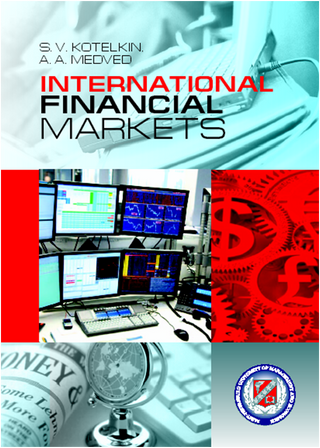?
International Financial Markets
The University training discipline “International financial markets” studies the behavior of economic institutions (business, fi nancial institutes, governments, individuals) in the multicurrency environment. The text consists of two sections, 6 chapters. The world monetary system, exchange rates and “forex” markets are considered in part I. The international money and capital mar kets, and multicurrency investments are studied in part II. The text is focused on the university students of the undergraduate and graduate levels, and business practitioners. Authors intended to instill in the readers a taste for work with the theoretical concepts, the empirical data, describing the evolution, current con- ditions and prospects of the international financial environment’ development in the framework of business decisions making.
